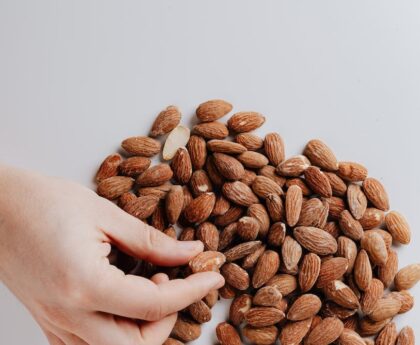As we age, one aspect of physical fitness and vitality that tends to decline is stamina. However, with the right approach and a few adjustments to your daily routine, you can regain and even increase your stamina and endurance. By incorporating the following nine habits into your lifestyle, you can significantly impact your overall fitness, boost your stamina, and overcome fatigue. These habits cover various areas that contribute to stamina, including exercise, nutrition, and sleep. By implementing these practical tips and strategies, you can enhance your cardiovascular fitness, increase energy levels, and enjoy a more resilient and energetic life.
- Engage in Cardiovascular Exercise: To build stamina at any age, it is crucial to train your cardiovascular system. Incorporate activities such as jogging, cycling, swimming, or any other form of cardiovascular exercise into your routine. Regular cardiovascular exercise improves heart and lung health, boosts endurance, and increases stamina. Aim for at least 150 minutes of moderate-intensity cardio each week, as recommended by the Physical Activity Guidelines for Americans.
- Be Consistent: Consistency is key when it comes to building stamina. Make it a habit to engage in regular physical activity and stick to your workout routine, even when you don’t feel motivated. Consistent effort allows your body to adapt and improve stamina and endurance over time. Establish a solid workout and rest schedule that you can realistically maintain.
- Shorten Rest Periods: While allowing your body to recover is essential, research suggests that keeping rest periods short during your workouts can help increase stamina. By reducing rest time between sets, you challenge your cardiovascular system, promoting endurance and stamina development. Design your strength training sessions to have longer work periods than rest periods between exercises and sets.
- Incorporate Interval Training: Interval training, particularly high-intensity interval training (HIIT), is effective at building stamina. HIIT workouts burn calories efficiently and tax your muscles and cardiovascular system, helping to improve stamina over time. Alternate between high-intensity bursts of exercise and periods of active recovery. This method enhances cardiovascular fitness, stamina, and metabolic efficiency.
- Gradually Increase Activity Duration: When building stamina, gradually increase the duration and intensity of your workouts. Your body needs time to adapt to increased demands, leading to improved stamina and endurance over time. Focus on gradually lengthening your workouts rather than making sudden, drastic changes. Building stamina requires patience and daily commitment.
- Prioritize Nutrient-Dense Nutrition: Nutrition plays a vital role in stamina and endurance. Fuel your body with nutrient-dense foods such as lean proteins, whole grains, legumes, fruits, and vegetables. These foods provide the necessary energy and nutrients for optimal stamina gains. Stay hydrated by drinking plenty of water and avoid excessive consumption of sugary and processed foods, as they can cause energy crashes.
- Strengthen Your Core: A strong core is essential for good posture, stability, and overall strength. Incorporate exercises that target your core muscles, such as planks, Russian twists, or bicycle crunches, into your routine. A strong core supports proper form during long workouts and endurance exercises. Focus on maintaining a strong core and neutral spine throughout the day.
- Monitor Your Heart Rate: Tracking your heart rate during workouts offers valuable insights into your stamina and cardiovascular fitness. Determine a target heart rate range based on your age and fitness goals and track your heart rate during exercise to ensure you maintain the desired intensity. Wearing a fitness tracker throughout the day can also provide feedback on positive changes in your resting heart rate as you engage in endurance training.
- Prioritize Quality Sleep: Quality sleep is crucial for overall health and stamina. Establish a relaxing bedtime routine, create a comfortable sleep environment, and limit exposure to electronic devices before bed. Adequate rest allows your muscles to recover and repair, preventing fatigue and supporting progress. Prioritize sufficient sleep to stay on track with your fitness goals.
Boosting stamina after 40 requires a combination of exercise, nutrition, and lifestyle adjustments. By incorporating these nine daily habits into your routine, you can significantly increase your stamina and overall fitness. Consistency, cardiovascular exercise, interval training, gradual progression, and proper nutrition play key roles in enhancing stamina. Additionally, focusing on core strength, monitoring heart rate, and prioritizing quality sleep support stamina development. Embrace these habits and enjoy the long-term benefits of increased stamina, improved energy levels, and enhanced quality of life.
References:
- Physical Activity Guidelines for Americans. (n.d.). Retrieved from https://health.gov/sites/default/files/2019-09/Physical_Activity_Guidelines_2nd_edition.pdf
- Ratamess, N. A. (2012). ACSM’s Foundations of Strength Training and Conditioning. Lippincott Williams & Wilkins.
- Gist, N. H., Fedewa, M. V., Dishman, R. K., & Cureton, K. J. (2014). Sprint interval training effects on aerobic capacity: a systematic review and meta-analysis. Sports Medicine, 44(2), 269-279.
- Hansen, D., Meeusen, R., & Mullens, A. (2014). The Impact of Different Types of Fatigue on Neuromuscular Variables Measured Using Neuromuscular Electrical Stimulation. International Journal of Sports Physiology and Performance, 9(2), 200-206.
- American Heart Association. (2022). Target Heart Rates. Retrieved from https://www.heart.org/en/healthy-living/fitness/fitness-basics/target-heart-rates





